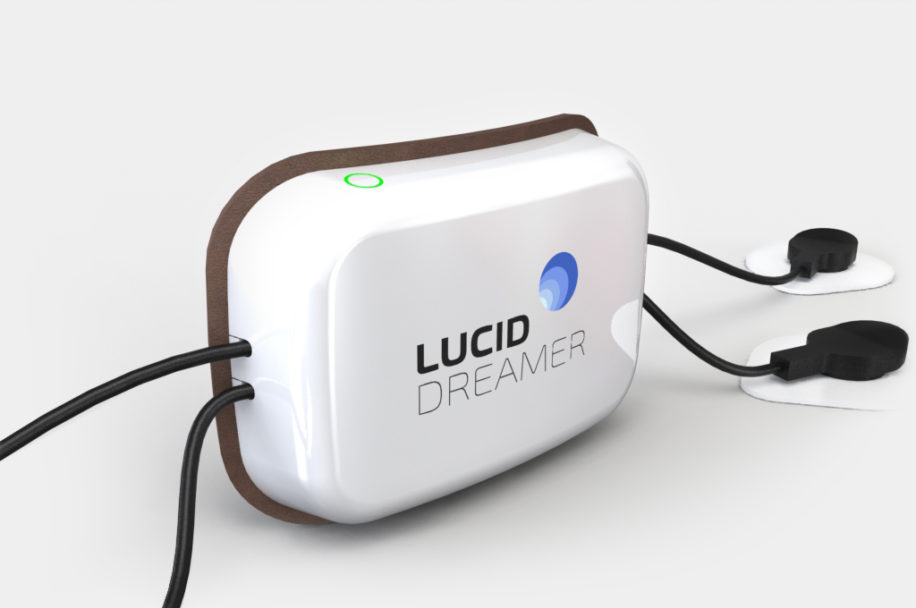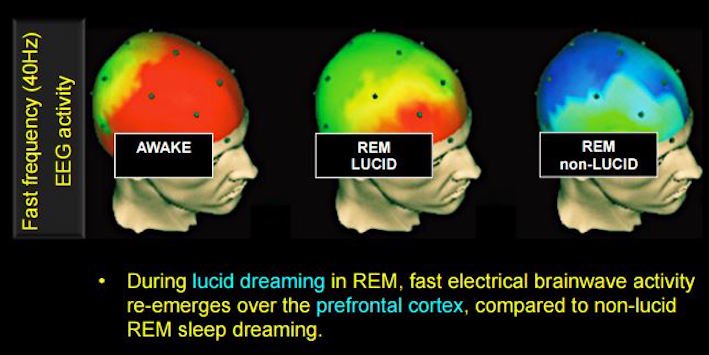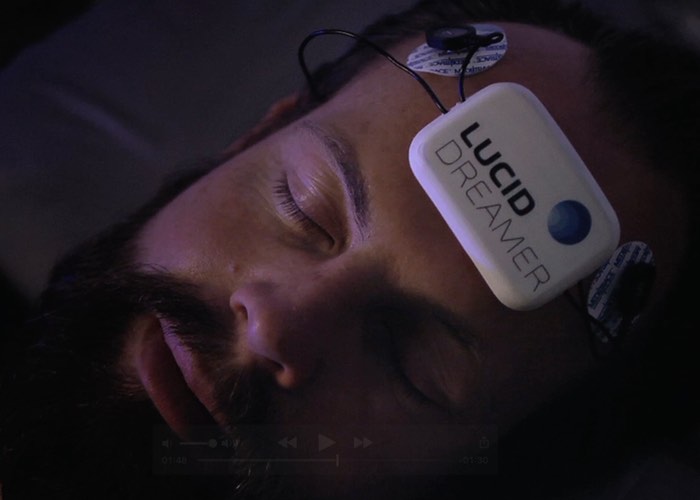News
The future is here: New device lets you control your dreams

- October 24, 2018
- Updated: March 10, 2024 at 6:20 AM
Have you ever been aware that you’re dreaming? You’re in the middle of a dream and suddenly you’re acutely conscious that what you’re seeing is not in fact real, but rather a projection from your own mind? This rare state of semi-consciousness is called lucid dreaming and if you’ve already experienced it you know firsthand how incredible, how endlessly freeing it can be. If you’ve never been lucky enough to have one – and don’t be disheartened; they’re exceedingly rare – the Lucid Dreamer is about to give you the opportunity.

How does this work?
In development by neuroscientists Derk Mulder and André Keizer, the Lucid Dreamer is a wearable device that utilizes advanced algorithms to detect when the wearer starts to dream. These algorithms rely on electrical signals from the brain, detecting the onset of a dream accurately and consistently. It also uses light and audio stimulation, which are long-known methods for increasing the likelihood of having a lucid dream, and takes measurements of your brain activity…
Are we moving too fast? Let’s take a step back:
What is lucid dreaming?

The philosopher Aristotle wrote that “often when one is asleep, there is something in consciousness which declares that what then presents itself is but a dream.”
In 1913, the Dutch psychiatrist and writer Frederik (Willem) van Eeden coined the term ‘lucid dream’ in his article A Study of Dreams. What this amounts to is an experience where you’re dreaming and yet realize that you’re dreaming. The result is that you can control the environment around you in whatever way you can think of.
Psychologist Celia Green dedicated her life to the study of lucid dreaming among other perceptual phenomena. She concluded in 1968 that lucid dreaming was closely associated with rapid-eye movement (REM sleep), coupled with a person realizing he is dreaming. Piggybacking on this, neuroscientist J. Allen Hobson theorizes that this recognition of a dream state may happen in the dorsolateral prefontal cortex, an area of the brain that is not active during REM sleep and where memory occurs.

Most lucid dreamers falter immediately upon realizing that they are dreaming. This is because the only way to maintain the experience is to be cautious enough to let the dream continue while simultaneously being aware that you are in a dream. More often than not, the realization that one is dreaming renders them awake moments later. Treading the fragile line between conscious awareness and conscious dreaming is trickier than it sounds, and it nearly always ends with waking up without meaning to.

3 best apps for helping you sleep
Read Now ►Is the Lucid Dreamer safe?
Yes. During the entirety of the Lucid Dreamer’s testing, no adverse events were reported. Though it may sound like the device is using electroshock therapy, that’s certainly not what’s happening here.
How to use it

Though it may look a little silly, using the device couldn’t be easier. The Lucid Dreamer comes with disposable, sticky electrodes. Attach these to the device, remove the protective covering and press the electrodes to the designated places on your forehead and behind your ears. Each use will require six electrodes: Four for your forehead, and then one behind each ear. If it sounds uncomfortable, you’re about to be pleasantly surprised; the Lucid Dreamer is designed with the wearer’s comfort in mind, so you should have no problem falling asleep.

There’s even an accompanying app. On it you can choose your stimulation protocol for the night (25Hz or 40Hz), which will likely be something you’ll need to tailor to your own preferences as you grow accustomed to using it; set the number of stimulations a night (three is the maximum); the duration of the stimulations (between 30 and 120 seconds); and the number of minutes the Lucid Dreamer will wait before triggering the lucidity.

5 best white noise apps for drowning out distractions
Read Now ►If you opt for the pro package (which we wouldn’t recommend until you try the essential first) you can further modify the intensity of the stimulation, receive more control over the frequency of Hz, and also have access to the Protocol Builder, which allows for experimentation with different frequencies. You can check out more comparisons between packages here. Find the one that works most reliably for you!
Is it possible to lucid dream without using this device?
For sure! People have attempted to develop the ability to consistently have lucid dreams since as early as ancient Greece. It is a skill that you can learn, and there are a number of documented induction techniques.
These techniques are not infallible, however, and even the most reliable will undoubtedly take a lot of practice and even more luck. Without the Lucid Dreamer there’s no clear-cut induction technique guaranteed to cause lucid dreams consistently, though there are some that look promising.
When can you get one?
Not just yet!
The Lucid Dreamer is still in development, but you can stay up to date with its progress and learn more about the device on their website. For more information and reports about lucid dreaming, check here.
If you’ve never had a lucid dream before, you’re in for an unforgettable ride – one where your imagination is quite literally the limit!
You may also like

Everything you need to know about Gemini, Google's AI
Read more

Samsung wants to compete with Apple thanks to the "Camera Continuity" in One UI 7
Read more

Nintendo Switch 2: we tell you everything we know so far
Read more

Are Gen Zs Habits Reshaping Society? The Statistics You Can’t Ignore
Read more

How to protect our conversations on Telegram with a code
Read more

OpenAI announces significant changes in its structure
Read more